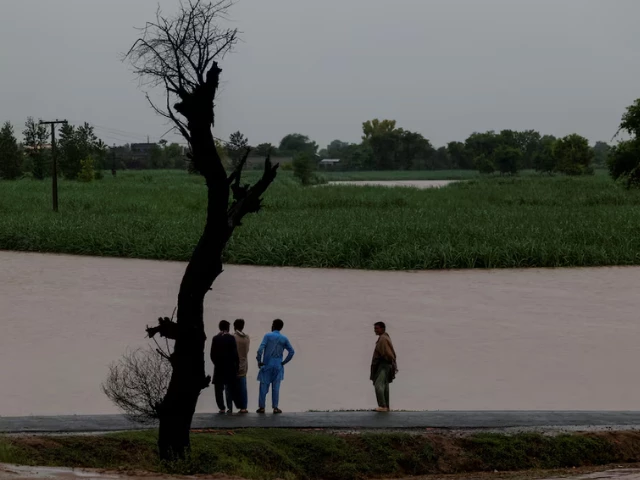LAHORE:
Pakistan’s flood crisis worsened on Wednesday as authorities warned of “exceptionally high” water levels in the Chenab and Sutlej rivers, threatening large parts of southern Punjab. The National Disaster Management Authority (NDMA) confirmed that monsoon floods have claimed at least 883 lives since late June.
In the past 24 hours, two more children died — one in Kotli, Azad Jammu and Kashmir, and another in Islamabad — pushing the nationwide death toll to 883, with nearly 1,200 others injured, according to the NDMA’s daily situation report.
Punjab and Khyber-Pakhtunkhwa remain the hardest-hit regions. Punjab has reported 223 deaths and 648 injuries, while Khyber-Pakhtunkhwa has recorded 488 fatalities and 360 injuries. Sindh has reported 58 deaths, Gilgit-Baltistan 41, Azad Kashmir 38, Balochistan 26, and Islamabad nine.
The NDMA, through its National Emergencies Operation Center (NEOC), has issued a fresh advisory, warning of potential rainfall in several regions of Pakistan over the next 12 to 24 hours.
Rain alerts have been issued for Punjab, Khyber-Pakhtunkhwa, Gilgit-Baltistan, and Azad Jammu & Kashmir, with intermittent showers expected in various parts of Khyber Pakhtunkhwa, including Chitral, Dir, Swat, Buner, and Abbottabad.
Authorities have cautioned against flash flooding in low-lying areas, overflowing streams, and landslides in hilly terrain.
The floods have destroyed or damaged over 9,200 houses — including 4,700 in Khyber Pakhtunkhwa and 2,100 in Azad Kashmir, and wiped out over 6,000 head of livestock. Nearly 240 bridges and more than 670 kilometers of roads have also been damaged across the country.
Chenab flood wave
Authorities in Multan Division reported that a dangerous flood wave in the Chenab has inundated dozens of settlements and raised water levels by up to four feet along the Akbar flood embankment. Houses near the embankment have already sustained damage, and officials said explosives have been placed on Head Muhammad Wala road to create a controlled breach if needed.
Drone surveillance teams have been deployed to locate stranded families and monitor abandoned homes overnight to deter looting. At Trimmu Headworks, water discharge was recorded at nearly 400,000 cusecs, while at Panjnad, officials expect a “very high flood” by Thursday (today).
Separately, PDMA Punjab reported that Chenab’s floodwaters have submerged 261 villages in Jhang and at least two dozen in Muzaffargarh. Authorities said water levels in the Sutlej and Ravi are also rising dangerously due to releases from Indian reservoirs.
The Pakistan Meteorological Department (PMD) warned that exceptionally high flood levels will persist in the Sutlej at Ganda Singh Wala and that a fresh flood wave in the Chenab could reach “very high to exceptional” levels from Marala downstream. At Panjnad, the confluence of Chenab, Ravi and Sutlej, floodwaters are expected to peak between September 4 and 5, threatening thousands of acres of farmland and hundreds of villages.
Indus at Guddu is also projected to reach “high to very high flood” levels by September 6 or 7. PMD cautioned that urban flooding is possible in Lahore, Gujranwala, Rawalpindi and Islamabad due to ongoing heavy rainfall in upper catchments.
The NDMA said 1,297 relief camps are active nationwide, sheltering more than 40,000 people during past 24 hours. Some 568 medical camps have treated more than 45,000 patients, many suffering from waterborne diseases. Punjab alone has established 655 camps for 11,000 displaced residents.
Rescue operations remain extensive. In the past 24 hours, 210 operations in Sindh evacuated more than 55,000 people, while Islamabad reported 14 rescues. In total, more than 1.08 million people have been rescued since the floods began in late June.
Federal agencies and humanitarian partners have distributed thousands of tents, food rations, blankets and mosquito nets, with Punjab and Khyber Pakhtunkhwa receiving the bulk of assistance. Officials have urged provincial authorities to remain on high alert as water levels continue to rise in major rivers.

